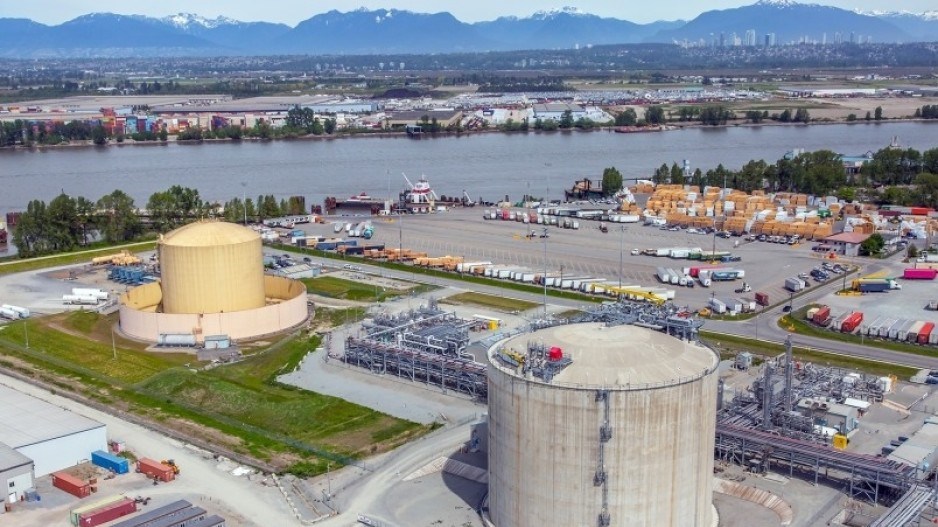Liquefied natural gas shipped from B.C. to China could result in a significant reduction of greenhouse gas emissions, if it is used to displace coal for things like district heating, according to a new study published in ScienceDirect.
British Columbians have probably heard this argument before from the LNG industry.
But the Intergovernmental Panel on Climate Change (IPCC) has also said, in its Seven Pathways, that coal-to-gas switching can result in a 50% reduction in GHGs, when natural gas replaces coal in thermal power production.
That’s because natural gas produces about half the GHGs that coal does, despite what you might have read about natural gas’s methane problem -- a problem that governments and industry are tackling through regulation and better equipment and practices.
A new paper published in ScienceDirect by academics at the University of BC and University of Calgary have further tried to quantify the potential GHG reductions if LNG from B.C. were used in China to replace coal for things like district heating and industrial uses.
“By replacing conventional coal with NG, approximately 40–45% and 26%–32% emissions reductions can be obtainable for Chinese textile and chemical industries, respectively,” the paper concludes.
“The highest emissions reduction of approximately 60% was observed when coal is replaced with NG for district heating.”
According to the paper, China 80% of China's district heating and industries are powered by coal, so reductions of 26% to 60% could take some very big bites out of China’s carbon footprint.
So why has the Green Party in B.C. lobbied against B.C.’s nascent LNG industry?
The problem is that, while LNG could significantly reduce GHGs in China when replacing coal, its production would increase GHGs in B.C. There are real concerns that the LNG industry, if allowed to grow, would make it impossible for B.C. to meet its greenhouse gas reductions targets.
Carbon accounting under the Paris Agreement is pretty parochial. National climate change plans – called nationally determined contributions (NDC) -- only account for GHGs produced by each country.
Canada would get no credit for reducing GHGs outside of Canada by exporting LNG to China, just as China gets no credit in its NDCs for selling solar panels to the U.S., despite the fact their use could result in significantly lower emissions in American electricity production.
There is a mechanism in the Paris Agreement, however, that might allow for Canada to grow the LNG industry and get GHG reduction credits for LNG exports: Internationally Transferred Mitigation Outcomes (ITMOs). It’s this mechanism that the recent study focused on.
Tyler Bryant, public policy manager for FortisBC and contributor to the study, said the research was aimed at developing a framework for how an ITMO might work for LNG trade with China. (FortisBC currently is the only company in B.C. producing LNG, which is produced at FortisBC's Tilbury plant.)
“We needed to know: is there a GHG reduction benefit, and how large is that benefit, before we could even begin thinking about could this then lead to some kind of compliance trading,” Bryant said.
It’s been assumed that LNG produced in B.C. would be used as an alternative to coal for producing electricity in Asia. But in China, it would more likely to be used in industry and in district heating, Bryant said.
“Where LNG is going to be consumed, most likely…is in the industrial sector,” Bryant said. “It won’t be in the power sector. That’s a high-cost use of LNG.
“There really is not a lot of other low-carbon solutions for those users. You can’t install a solar farm to generate industrial scale heat.”
An ITMO designed for LNG exports to China would probably need to be negotiated nation-to-nation. Striking such an agreement would require a GHG life cycle analysis for both LNG production and specific end uses to estimate just how many GHGs would produced in Canada, and how many would be reduced in China, and how to divvy up the carbon savings in a way that benefits both countries from a carbon accounting standpoint.
But why would China even sign such an agreement, which would necessarily mean forgoing some of its own GHG reduction credits?
"Why might they want to do that? Because that might allow them to procure the lowest carbon LNG at a really competitive price," Bryant said.
"If they were concerned about the carbon intensity of the LNG they were consuming, and the price of that LNG, then you can envision an ITMO agreement where China would share some of that emission benefit to, say, get some of the lowest carbon LNG in the world, which would come from B.C."
LNG produced in B.C. would have some of the lowest emissions intensities in the world for several reasons. First, the natural gas produced in the Montney region has a comparatively low carbon content to start with. Also, some of the upstream infrastructure -- natural gas wells, pipelines and processing -- is powered by clean electricity, rather than by natural gas. Furthermore, the methane leakage in B.C.'s natural gas sector is considerably lower than many other jurisdictions. Best practices like green completions reduces the amount of methane released during well completions.
The Woodfibre LNG project in Squamish would have an even lower emissions intensity than the LNG Canada project because it would use electric drive instead of natural gas for its processing, with the electricity coming for clean hydro power.




